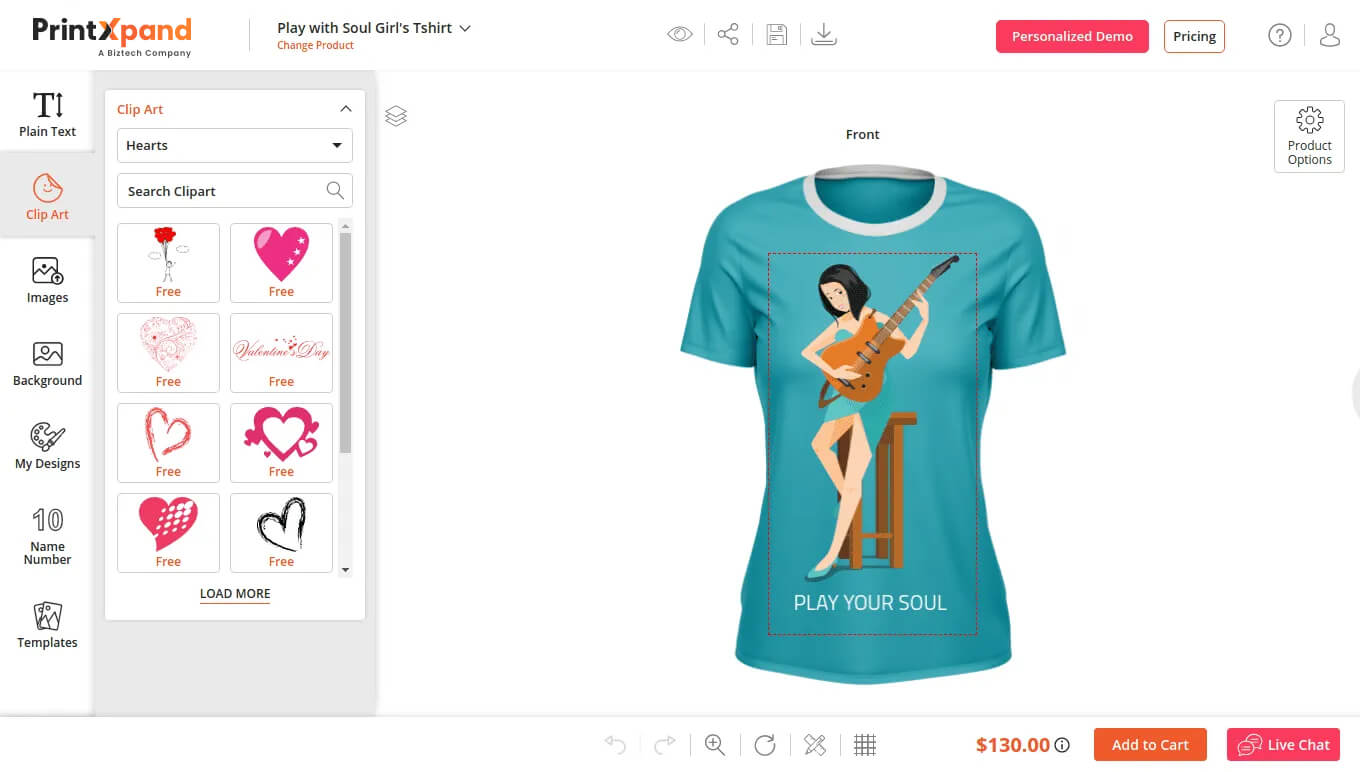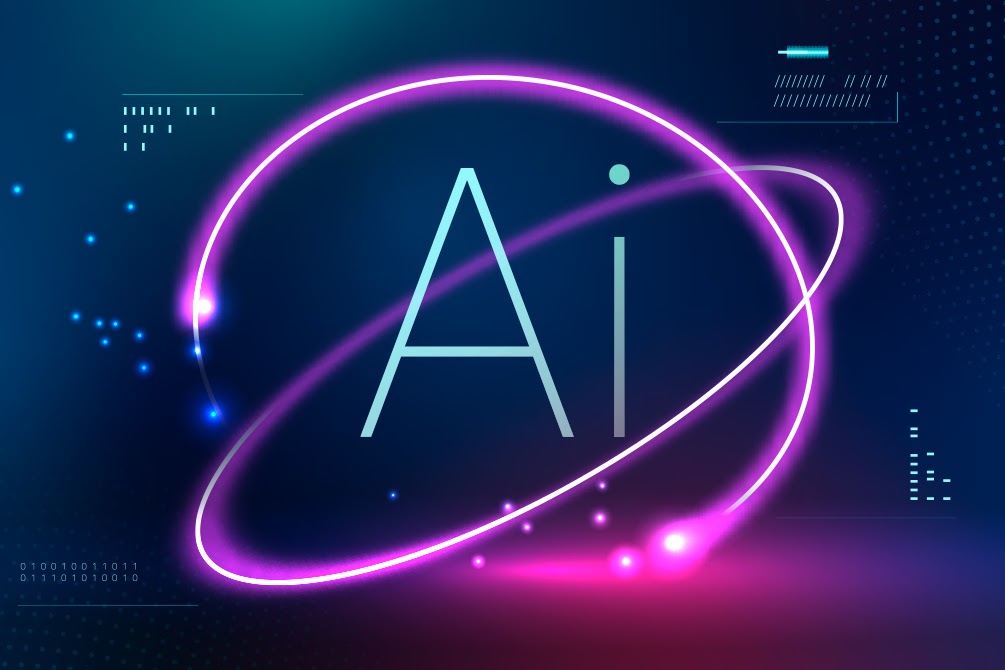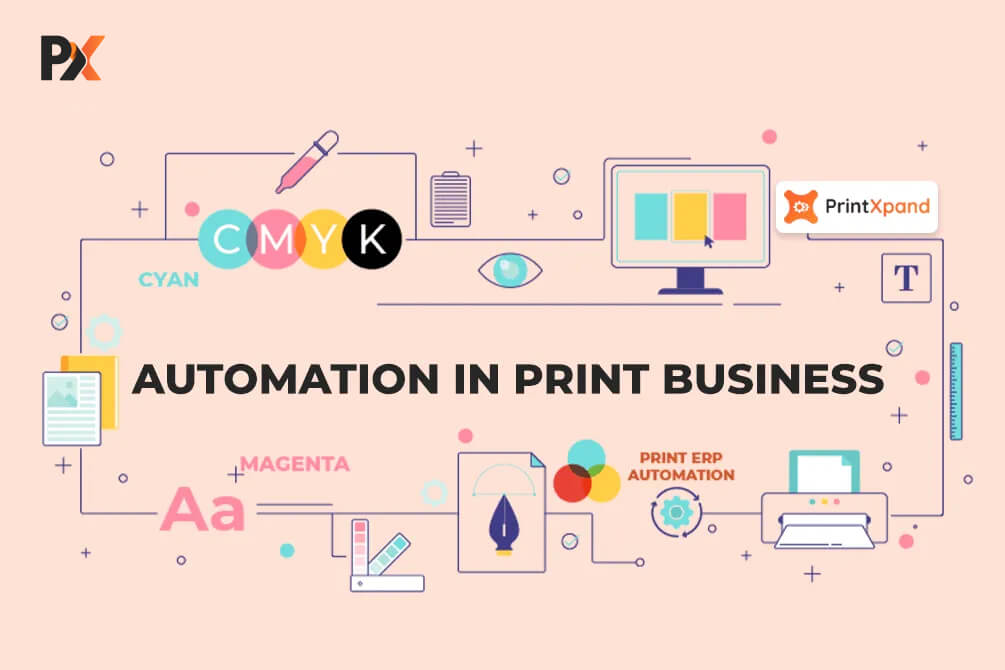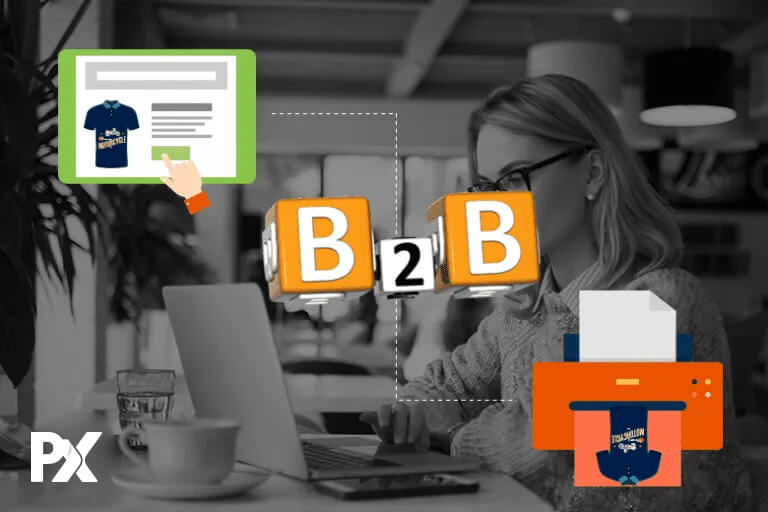- Summary
- 1. Print Automation for Faster and Better Service
- 2. Improved Security With AI/ML
- 3. Predictive Maintenance to Reduce Unplanned Downtimes
- 4. Enabling Personalization in the Printing Industry
- 5. AI to Reduce Printing Errors and Improve Quality
- 6. AI-generated Designs (T-shirts)
- 7. Using AI for Marketing
- AI's Transformation of the Printing Industry
- Concluding Remarks
Summary
Honestly, artificial intelligence and machine learning still seem a little fancy. Unless one is straight out of Silicon Valley, it may not be easy to understand these technologies’ nature and complexity thoroughly.
However, there is no denying that AI/ML adoption is growing faster than ever. We have seen AI deployed across a broad spectrum of use cases to solve business problems.
Yes, not every business has adopted AI/ML. But it appears that we are shifting from the early adopter phase and moving into the early majority phase.
Did you know the spending on AI technologies is likely to grow to $97.9 billion in 2023? This is more than two and a half times the spending level of 2019.
If we talk about the impact of AI/ML on the printing industry, businesses have started improving their services with AI-powered solutions. From digital automation to improved security, AI/ML is revolutionizing the print industry.
AI/ML in the printing industry is not far away. Instead, it is already paving the way for greater opportunities and growth. Continue reading to know more about the use cases of AI/ML in the printing sector.
1. Print Automation for Faster and Better Service
Automation is important for any business, and print is no different. But still, some businesses manually carry out tasks like data entry, quality assurance, data migration, and more. You can automate all these tasks and thus reduce the quality, cost, and speed of a print project’s process.
For print businesses trying to take advantage of printing automation, RPA comes to play. Robotic Process Automation is a software technology used to automate mundane business processes. Using RPA, software users can create software robots or bots that learn, mimic, and execute rule-based business processes.
While RPA is efficient, it cannot self-learn. It can do only when a programmer tells it what to do. AI, on the other hand, can teach itself. So, when you combine RPA and AI, it can be powerful.
Here’s how it works – RPA deals with structured data. AI gathers insights from unstructured and semi-structured data and converts data into a structured form for RPA to understand. This combination of AI and RPA can help perform various manual tasks, including order processing, printing, assessment, etc.
Automation is a must for printing businesses that want to be future-ready. If you want to automate your web-to-print storefront, a print MIS/ERP can make for an excellent solution for your business. It enables you to streamline you to optimize your print workflow.
PrintXpand offers a complete print MIS/ERP software solution that enables print businesses like yours to maintain a glitch-free print production cycle. Our software offers a powerful combo of different modules that you need to automate your business operations.
It includes modules like inventory management, print job manager, order manager, and more. Click the link below to know more about how a print MIS/ERP can be beneficial to your business.
2. Improved Security With AI/ML
The rise in cybercrime shows no signs of slowing down. The amount of business lost because of cyber-attacks averaged 1.52 million dollars, a report by IBM states.
The printing industry can not overlook cybersecurity because of two reasons
- Variable Data Printing and Direct Mail Marketing. Both harness computer databases and digital devices which are vulnerable to data threats.
- Secondly, print companies deal with multiple partners for a print project. This decreases control over the content and increases the risk of exposure. Hence, taking measures to improve security is important.
One case of cyber-attack in the printing industry happened in 2017. An online security breach occurred at a PIP Printing Company that exposed 400 GB of highly sensitive data. The data included credit card information, social security numbers, legal filings, and more.
Guarding against such breaches is crucial for printing businesses, and AI/ML is a great help. As print businesses deal with a vast amount of customer data on their print store, knowing the source of malware becomes difficult.
AI can monitor data and give quick responses to any threat that it detects. Moreover, using data cleansing techniques and continuously auditing data protection techniques, AI can safeguard your company and clients.
Summing up: with cyberattacks increasing at an exponential rate, you need to keep your printing business safe from potential threats. Deployment of AI technology with machine learning can provide network analysis and real-time threat detection.
3. Predictive Maintenance to Reduce Unplanned Downtimes
The goal of predictive maintenance is to monitor the performance and condition of equipment and reduce the likelihood of failures. Predictive maintenance uses condition-monitoring techniques to track the performance of assets, detect defects, and fix them.
Print businesses are using predictive maintenance to increase efficiency. For instance, printing equipment has integrated sensors that gather and scan data for any defects. However, the biggest challenge is that print sensors can only foresee bugs and not regulate the data that a printing device generates.
AI/ML can add more power to predictive maintenance by adding multiple data types (audio, video, or images) on top of existing sensor data. For example, by adding audio data, sensors will pick up sound and vibration using deep learning ML methods. That will help in predicting if print equipment will fail soon or not.
For your web-to-print storefront, a print MIS/ERP software solution can be one of the best investments.
Revamp your web-to-print storefront with a game-changing Print MIS/ERP software solution.
Experience streamlined, error-free printing processes.
4. Enabling Personalization in the Printing Industry
There is another area where AI holds tremendous value. And that is improving customer service by delivering tailored experiences. The approaches of AI and machine learning involve gaining insights from data to predict what the customers want. This could be knowing what content they would like to see or what products they would be most interested in.
Following are some ways how AI-based personalization can be beneficial:
- AI-powered chatbots that deliver a customized conversation flow to meet the needs of individual visitors.
- AI-powered search engines can be valuable in offering more accurate and personalized results.
- Sending personalized mobile notifications to improve engagement.
In any industry, including printing, personalization is the key to remain on top and win your customers. If you are looking for ways to deliver a more tailored experience to your customers and level up your game, you can consider having web to print software on your online store.
With web-to-print software, your customers can create customized and print-ready designs. Our responsive and user-friendly tool comes with a library of images, text, clipart, and ready-made templates that make customization easy for your customers.

(Fully-functional & Feature-rich Web to Print Software That Makes Customization Easy for Your Customer)
Our tool is integrable with any platform and works on diverse products with a printable surface like t-shirts, cards, phone cases, etc. Moreover, it comes with powerful backend features that let the admin tweak its functionality as per their business needs. Check out the live demo to know more.
5. AI to Reduce Printing Errors and Improve Quality
Let’s assume that you have a t-shirt printing business and you want to print 5000 copies. Now there is a problem with your printing software. There could be issues in image quality, ink supply, number of copies, etc. With AI, you can rest assured that the glitch won’t cause too much trouble. AI can give real-time alerts to identify problems before they occur.
AI can even help in improving the quality of print orders. For instance, Printful uses machine learning for detecting customer-uploaded image transparency. The company offers a smart image tool to its customer base. With this tool, customers can fix their images before moving forward to fulfillment.
A Printful employee can manually check up to 10,000 files per month, whereas an ML tool can process the same number of files in 2 to 4.5 minutes.
“We have to make sure our customers get quality products, and with the help of machine learning, we can help thousands of customers by improving their experience every day. We wouldn’t be able to do that just by ourselves,” says Janis Akmentins, Head of Engineering at Printful.
Moreover, the AI tool adjusts image quality by doubling the DPI (Dots Per Inch) of the design. This enables customers to make their image larger without it losing any quality.
This Smart Image tool helped more than 9000 customers with good quality print files.
6. AI-generated Designs (T-shirts)
Other than personalization, data security, automation, etc., AI’s latest job is designing t-shirts. Cross & Freckle is a New-York based fashion brand. Their t-shirts come in black or white and have designs embroidered that reflect New York City life: pigeons, dollar pizza slices, subway rats.
Interestingly, a designer didn’t make these designs. But it’s the job of a neural network. The graphics on the t-shirt are a result of a variational autoencoder. Variational autoencoder is a type of deep learning method that is helpful for image generation.
The variational autoencoder is trained on data from Google Creative Lab’s game Quick, Draw. Quick Draw has a collection of over a million doodles from people around the world. Quick Draw works like Pictionary, where you draw an object, and the computer guesses what it is.
Paul Blankley, who handles the company’s technical side, created the autoencoder and fed it doodles of pigeons, pizza, etc., from Google’s data set, and voila!
Another example of AI-generated images on a t-shirt is a result of the StyleGan neural network. The network learned to create modern masterpieces after looking at more than 40,000 images on WikiArt. Russian data scientist Evgeny Kashin is the person behind the StyleGan neural network. Later, he printed one of the AI-generated images on a t-shirt. Generative AI, which is a subset of AI, is being used by companies like Fabfabai, Cohesive, Saxior, and CPUmade to make t-shirt designs. Today, big players in creative & e-commerce niches are leveraging generative AI development services to integrate AI into their platforms or start a new POD business.

(AI-designed T-shirt)
7. Using AI for Marketing
Artificial intelligence is changing everything, including marketing. AI can help printing businesses optimize and speed up different marketing tasks, deliver better customer experiences, and drive more conversions.
One of the biggest advantages of AI is personalization. Many businesses use AI to personalize their websites, email, video, and other content to serve their customers better. Secondly, AI can collect and track real-time data. That helps marketers to make smarter and faster decisions.
Here’s how printing businesses can use artificial intelligence for targeted marketing.
→ AI-powered Customer Insights
Customer insight is data that provides a better understanding of customer attitude. You can use this information to get more insights into customer’s needs and preferences. That will help you create better customer experiences, strengthen customer relations, and improve sales.
Using AI for customer insights and market research facilitates collecting information and analysis faster and more efficiently. Using the data collected by algorithms, you can create customer personas and make more customer-centric decisions.
→ Intelligent Email Content Curation
Your team spends hours compiling and scheduling emails to different customer segments and yet can’t deliver personalized emails to everyone. That’s where AI comes into the picture.
It can outperform humans, make accurate predictions, and give recommendations, thus expanding what you can achieve through email marketing. Here are a few use cases of using AI in email marketing.
- Better subject lines – Natural Language Generation, a subfield of AI that can write a language. After training it on a large dataset, it can produce content for different purposes, including press releases, subject lines, etc.
- Determine nature of future engagement: Predictive analytics can predict future behavior based on previous interactions. Using AI, you can email product recommendations that a customer is likely to be interested in.
→ AI-enhanced PPC Marketing
PPC is labor-intensive that requires managing spreadsheets every day. Leveraging AI into this time-consuming process can reduce human errors and improve results. Machine learning algorithms with rule-based technology can help you find new ways for optimizing your keywords, targeting, bids, etc.
According to Markus Lippus, chief technology officer at MindTitan, “AI-powered systems can help advertisers test out more ad platforms and optimize targeting. That’s exactly what Facebook is doing with its ad delivery optimization. However, this approach could also be applied to omnichannel PPC campaign data (held by a single company) by using third-party or in-house AI tools.”
AI's Transformation of the Printing Industry
The printing industry has undergone a remarkable transformation with the integration of Artificial Intelligence (AI) technologies.
In this discussion, we will delve into the before-and-after comparison of how AI has revolutionized the printing industry.
Before AI:
- Limited Customization: Print businesses offered limited customization options to customers. Personalizing prints beyond basic details was complex and often required substantial manual effort.
- Static Templates: Predominantly, print products were confined to static templates, restricting creative freedom and limiting design choices for customers.
- Manual Proofing: The proofing process heavily relied on manual checks, leading to occasional errors, revisions, and slower turnaround times.
- Inefficient Workflows: Printing workflows were labor-intensive, with tasks like color correction, image optimization, and print preparation handled manually, causing bottlenecks and potential inconsistencies.
- Lack of Data Insights: Printers had limited access to data-driven insights about customer preferences and market trends, hindering their ability to tailor offerings effectively.
After AI:
Dynamic Customization: AI has empowered print businesses to offer dynamic and easy-to-use customization tools. Customers can now create highly personalized prints effortlessly.
Flexible Templates: Web-to-print solutions, along with AI, enable the generation of dynamic templates based on user input, expanding design possibilities and simplifying the creative process.
Automated Proofing: AI-driven preflight checks and automated proofing ensure error-free designs, reducing manual intervention and accelerating production schedules.
Streamlined Workflows: Most of the tasks, from color correction to print layout, can now be optimized, reducing reliance on manual labor and ensuring consistent, high-quality results.
Data-Driven Insights: With the help of AI, print businesses can now analyze customer behavior and preferences, providing actionable insights that enable businesses to tailor their offerings, pricing, and marketing strategies more effectively.
Cost Efficiency: The automation of labor-intensive tasks and waste reduction have made it possible for print businesses to increase their efficiency at a lower cost, leading to improved profitability.
Concluding Remarks
AI in the printing industry is already here. These use cases are proof that AI/ML is changing the way print businesses operate. Artificial intelligence has the potential to open new revenue streams by improving the effectiveness of printing businesses.
Business owners have started preparing their business for the future by investing in the right technical tools like web to print software to enable product customization in their stores, a print management system to streamline printing processes, etc.
PrintXpand can be a reliable partner to fulfill all your technology needs. We have more than 14 years of experience in this space and the right resources and team to help flourish your business. Whether you want to automate your business, provide a product designer tool to your customers, or even planning to start a web-to-print storefront, we are here to answer all your queries.
All product and company names are trademarks™, registered® or copyright© trademarks of their respective holders. Use of them does not imply any affiliation with or endorsement by them.




